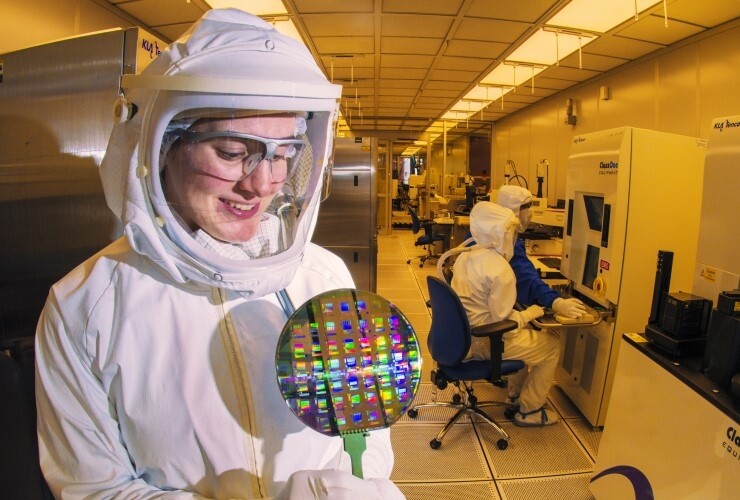
Image credit – Randy Montoya / Sandia National Lab

Image credit – Randy Montoya / Sandia National Lab
Bipartisan legislation introduced
The legislation’s sponsors argue that increased investments in semiconductor research and manufacturing capacity are needed in the face of dependence on and increasing competition from other countries, particularly China. In a statement, Cornyn wrote, “Semiconductors underpin nearly all innovation today and are critical to U.S. communications and defense computing capabilities. While Texas has been a leader in manufacturing this technology and the U.S. leads the world in chip design, most of those chips are manufactured outside the United States.”
The CHIPS for America Act would authorize about $15 billion in total for an array of R&D initiatives. A National Semiconductor Technology Center sponsored by multiple agencies would conduct research and prototyping of advanced semiconductors in partnership with the private sector, with a recommended budget of $3 billion stretched over 10 years. An Advanced Packaging National Manufacturing Institute under the Department of Commerce would be funded at a recommended $5 billion over five years with a focus on promoting standards development, public-private partnerships, and workforce training programs.
The bill would also establish a semiconductor program at the National Institute of Standards and Technology that would support a new Manufacturing USA institute dedicated to developing advanced testing, packaging, and assembly capabilities and tools to automate semiconductor machinery maintenance. The bill recommends $30 million annually over the next five years for the institute and a further $20 million per year to support other components of the program, such as advanced metrology research.
In addition, the bill would recommend the National Science Foundation and the Department of Energy respectively receive $3 billion and $2 billion over five years for “semiconductor basic research.” It also expresses support for the Department of Defense’s ongoing Electronics Resurgence Initiative
To coordinate research efforts, the bill directs the interagency National Science and Technology Council to develop a national semiconductor research strategy and update it every five years.
Aside from new R&D activities, the bill would provide direct support to semiconductor manufacturing companies through a mix of tax incentives and subsidies.
Starting in 2021, it would provide a tax credit for qualified semiconductor equipment or manufacturing facility expenditures that would ramp down over time until phasing out in 2027. It would also use the proceeds from tariffs to create a $10 billion trust fund administered by the Commerce Department that would provide matching grants to state and local incentives for companies to invest in domestic semiconductor manufacturing facilities.
Finally, the bill would establish a Multilateral Microelectronics Security Fund administered by the State Department that would facilitate the international “development and adoption of secure microelectronics and secure microelectronics supply chains.”
The CHIPS for America Act’s focus on semiconductor R&D would bolster current efforts by federal science agencies to expand their footprint in the field.
Last year, the White House’s annual R&D priorities memorandum
For instance, NSF’s budget proposal included $84 million for “research to address fundamental science and engineering questions on the concepts, materials, devices, circuits, and platforms necessary to sustain progress in semiconductor and microelectronic technologies.”
DOE’s Office of Science requested an increase from $5 million to $45 million for a microelectronics initiative that it established last year in response to opportunities identified through a 2018 Basic Research Needs workshop
Meanwhile, DOD has made major investments in developing supplies of trusted microelectronics for specialized military applications. For fiscal year 2021, the department requested $318 million for the Electronics Resurgence Initiative and $597 million for its Trusted and Assured Microelectronics program.
At a recent conference, Director of Defense Research and Engineering for Modernization Mark Lewis said